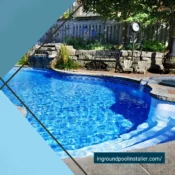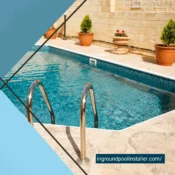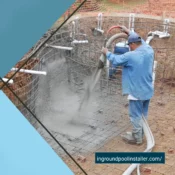Inground Pool Installation Costs: What You Need to Know

Inground Pool Installation Costs: What You Need to Know
When contemplating the financial undertaking of inground pool installation, it is essential to comprehend the multifaceted cost structure involved. Beyond the initial choice between concrete, vinyl, and fiberglass, each with its distinct cost implications, several other factors demand attention. These include site excavation, landscaping adjustments, and potential permitting fees. Energy efficiency considerations, such as heating systems and pump installations, further influence long-term expenditures. Additionally, safety installations, aesthetic enhancements, and routine maintenance must be factored into the total investment. Exploring these intricacies will equip you with the knowledge necessary to make an informed decision, but the complexities don't end here.
Factors Affecting Installation Costs
The installation costs of an inground pool are influenced by a multitude of factors that can significantly impact the overall budget. One primary determinant is the selected pool type—concrete, vinyl, or fiberglass—each offering distinct cost implications. Concrete pools, renowned for their durability and customization potential, typically incur higher expenses due to intensive labor and materials.
Conversely, fiberglass pools are pre-fabricated, reducing installation time and labor costs, yet may involve higher initial material expenses. Vinyl pools, while generally more economical, necessitate periodic liner replacements, affecting long-term cost considerations.
Site preparation is another critical factor, encompassing land grading, soil type, and accessibility. Properties with challenging terrain or rocky soil conditions may require extensive excavation and specialized equipment, escalating costs. Furthermore, local zoning regulations and permit requirements also play a role, as compliance with municipal codes can involve additional fees and procedural delays.
The inclusion of various features and finishes, such as lighting, heating systems, and custom tiling, further influences the budget. These enhancements, while elevating aesthetic and functional value, contribute to increased installation expenses. Understanding these factors is essential for individuals seeking a comprehensive and realistic financial plan for their inground pool installation.
Additional Expenses to Consider
Beyond the initial installation costs, homeowners should anticipate a range of additional expenses associated with maintaining and enhancing an inground pool. These costs are crucial for ensuring both the longevity and optimal performance of the pool. Regular maintenance is paramount, with expenses covering chemical treatments, cleaning supplies, and professional services. Homeowners can expect to invest in chlorine, pH balancers, and algaecides, which may total several hundred dollars annually.
Furthermore, energy costs can be significant, particularly if heating systems or advanced filtration units are installed. Energy-efficient solutions, such as solar covers or variable-speed pumps, though initially costly, can reduce long-term utility expenses.
Another consideration is repair and replacement costs for essential components like pumps, filters, and liners, which inevitably degrade over time.
Enhancements such as safety features, including pool covers and fencing, not only contribute to security but may also be mandated by local regulations. Additionally, aesthetic upgrades—landscaping, lighting, or water features—can enhance the pool's appeal and value, albeit at an additional cost. By understanding these ongoing and potential expenses, homeowners can make informed decisions, fostering a sense of community among pool owners who prioritize both enjoyment and responsibility.
In conclusion, the adage "an ounce of prevention is worth a pound of cure" aptly encapsulates the importance of comprehensive planning when investing in an inground pool. Understanding the variations in costs associated with concrete, fiberglass, and vinyl pools, alongside the necessity of factoring in site preparation, maintenance, and potential repairs, is paramount. By meticulously evaluating these elements, informed decisions can be made, ensuring long-term satisfaction and financial prudence in the installation and upkeep of an inground pool.
All Categories
- Concrete
- Concrete
- Concrete pools
- Construction
- Custom Features and Add-ons
- Design
- Design
- Design
- Design & Construction
- Design and Planning
- Features & Customization
- Infinity edge
- inground pool
- inground pool builder
- inground pool installer
- Installation
- Installation Process
- Legal & Administrative
- Materials
- planning and design
- Pool Aesthetics and Customization
- Pool Design
- Pool Equipment
- Pool Features
- Pool Features
- Pool Installation Process
- Pool Materials
- Pool Materials
- Pool Types
- Project Planning
- Renovation
- Resurfacing
- top sights
- Types of Inground Pools
- Types of Inground Pools
- Types of Inground Pools
- Types of Inground Pools
- Water Treatment



